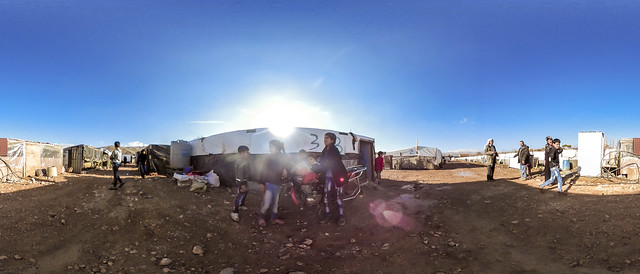Children are the Future: The Effects of the Syrian Civil War

Photo Credit to the UK Department for International Development Attribution 2.0 Generic (CC BY 2.0)
As the conflict in Syria enters its eighth year, mental health experts make their way into the region in an attempt to assess a generation of children who have spent their entire lives in a war zone.
In 2011, the Arab Spring, a successful wave of revolutions across North Africa and the Middle East, resulted in the collapse of Egyptian and Tunisian governments. The Syrian population began to engage in peaceful demonstrations in support of democracy. Bashar al-Assad, president of the Syrian Arab Republic, retaliated against protests by killing and imprisoning demonstrators. Since March 15, 2011, the country of Syria has been devastated by ongoing warfare.
According to the United Nations High Commissioner for Refugees (UNHCR), 5.5 million Syrians have fled from the region and an additional 6.6 million persons have been internally displaced. The conflict has resulted in over 500,000 deaths.
Lebanon, Jordan, and Turkey currently host the greatest number of Syrian refugees. In 2016, Dr. M.K. Hamza, neuropsychologist and professor of Clinical Mental Health Counseling at Lamar University, coined the term “human devastation syndrome” to define the effects of the physical and emotional trauma experienced by a generation of Syrian children who have lived all or a large portion of their childhood in an ongoing war. Hamza disclosed details about the term in the Syrian American Medical Society’s November 2018 Mental Health Report. The term is used “to describe the particular mental health effects of the Syrian conflict because no other term can describe the level of human suffering Syrian refugees have endured.” Hamza goes on to explain the need for this new definition, stating, “I have searched the repertoire of mental health texts, looking for a description of the purposeful and total demolition of a human being. I searched the criteria of all psychiatric stressors and traumas and could not find a description for those psychological injuries. I am perplexed and humbled by our lack of ability to define, diagnose, and treat this complex condition.”
Hamza adds, “While displaced populations and refugees continue to suffer humiliation, agony and pain of ethnic cleansings and wars, children who endure repetitive exposure to traumatic events seem to suffer the deepest of all psychological injuries.”
The term Post Traumatic Stress Disorder has become insufficient in reflecting the insurmountable pain and agony endured by Syrian children. Many have seen bodies ravaged by the effects of bombings and have seen the bodies of their parents or siblings mutilated and destroyed. Often, there are only one or two surviving children who endure the journey to refugee camps, where extreme poverty and exploitation provoke further mental trauma.
The Syrian regime under Bashar al Assad is responsible for over 90 percent of the killings of civilians that have taken place since 2011. Though several attempts at peace talks have taken place since 2012, the fate of the Syrian population relies on Assad’s government. In January 2017, politicians of the opposition faced hostility when the fate of Assad’s future in a transitional Syrian government was discussed. In May 2017, Turkey, Iran, and Russia attempted to assign de-escalation zones in Syria.
The principle concern of physicians and clinical experts like Dr. Hamza is the effect this period of time will have on Syria’s youth who have only known war. The mental health emergency does not stop when the fighting stops. There is no ceasefire that can end the trauma that has been endured by the children of Syria, and will continue to impact this population even after the nation is rebuilt.




